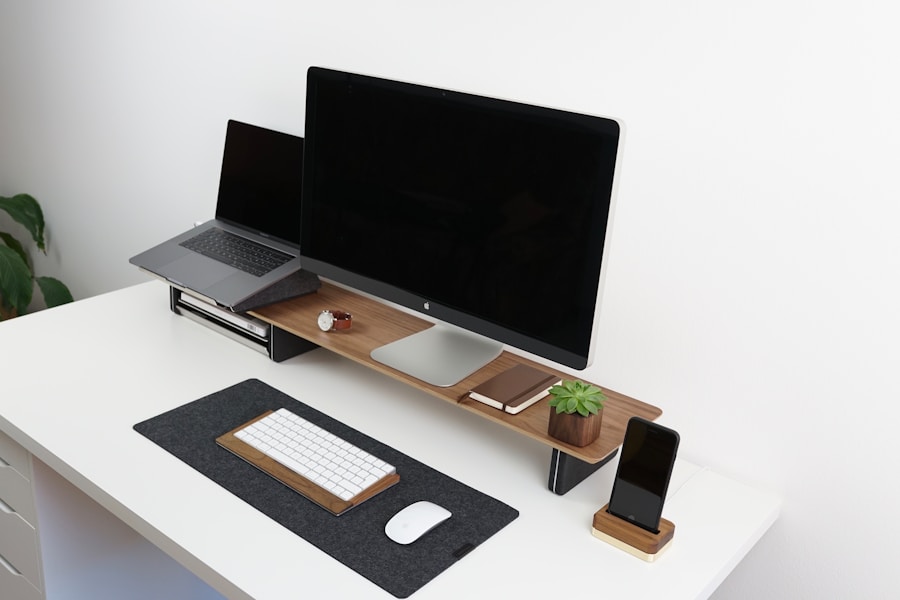In recent years, the concept of sit-stand desks has gained significant traction in both home and office environments. These desks, which allow users to alternate between sitting and standing positions while working, have emerged as a response to the growing concerns surrounding sedentary lifestyles. With the rise of technology and the increasing number of hours spent in front of screens, many individuals have begun to recognize the potential health risks associated with prolonged sitting.
Sit-stand desks offer a practical solution, promoting a more dynamic work environment that encourages movement and engagement. The design of sit-stand desks varies widely, from simple manual adjustments to sophisticated electric models that allow for seamless transitions between heights at the touch of a button. This flexibility not only caters to individual preferences but also accommodates various tasks that may require different postures.
As more research highlights the negative impacts of a sedentary lifestyle, including obesity, cardiovascular disease, and musculoskeletal disorders, the popularity of sit-stand desks continues to rise. They are not merely a trend; they represent a shift towards healthier work habits and a more ergonomic approach to daily tasks.
Key Takeaways
- Sit stand desks allow for both sitting and standing positions, promoting movement and reducing sedentary behavior.
- Using a sit stand desk can lead to improved posture, increased energy levels, and reduced risk of certain health issues such as obesity and cardiovascular disease.
- To set up a sit stand desk for maximum productivity, ensure proper ergonomics, adjust the desk to elbow height, and alternate between sitting and standing throughout the day.
- Tips for using a sit stand desk effectively include taking regular breaks, using an anti-fatigue mat, and wearing supportive footwear.
- Incorporating movement and stretching into your sit stand desk routine can help reduce muscle tension and improve circulation, leading to increased comfort and productivity.
Benefits of Using a Sit Stand Desk
Reduced Risk of Chronic Diseases
Studies have shown that standing more throughout the day can lead to lower blood sugar levels, reduced risk of heart disease, and even improved longevity.
Improved Productivity and Focus
Alternating between sitting and standing can help maintain energy levels and reduce feelings of lethargy that often accompany long hours at a desk. Research published in the Journal of Physical Activity and Health found that individuals who used sit-stand desks reported lower levels of fatigue and discomfort compared to those who remained seated for extended periods.
Enhanced Job Satisfaction and Performance
A study conducted by the University of Minnesota revealed that employees who used sit-stand desks were more engaged in their work and reported higher levels of job satisfaction. This increased engagement can lead to improved performance, creativity, and overall job effectiveness. The ability to change positions throughout the day allows individuals to find their optimal working posture, which can further enhance concentration and output.
How to Set Up a Sit Stand Desk for Maximum Productivity

Setting up a sit-stand desk effectively is crucial for maximizing its benefits. The first step is to ensure that the desk height is adjusted correctly for both sitting and standing positions. When seated, your elbows should be at a 90-degree angle, with your wrists straight and hands hovering comfortably above the keyboard.
The monitor should be positioned at eye level or slightly below to prevent neck strain. When standing, your feet should be flat on the ground, with your weight evenly distributed between both legs. This ergonomic setup minimizes discomfort and promotes better posture.
In addition to height adjustments, consider the arrangement of your workspace. Keep frequently used items within easy reach to avoid unnecessary stretching or straining. Organizing your desk with an efficient layout can significantly enhance workflow and reduce distractions.
For instance, placing your phone or notepad within arm’s reach can help maintain focus on tasks without interrupting your flow. Furthermore, incorporating accessories such as an anti-fatigue mat can provide additional comfort while standing, reducing fatigue in your legs and feet over time.
Tips for Using a Sit Stand Desk Effectively
To truly harness the benefits of a sit-stand desk, it is essential to develop a routine that incorporates regular movement and position changes throughout the day. A common recommendation is to alternate between sitting and standing every 30 to 60 minutes. This approach not only helps prevent stiffness but also encourages circulation and keeps energy levels high.
Setting reminders or using apps designed for this purpose can help establish this habit until it becomes second nature. Another effective strategy is to integrate micro-breaks into your work routine. These short breaks can involve simple stretches or brief walks around the office or home.
For example, taking a minute to stretch your arms overhead or perform gentle neck rolls can alleviate tension that builds up during prolonged periods of focus. Additionally, consider using standing meetings or phone calls as opportunities to remain on your feet, further promoting movement throughout your workday.
Incorporating Movement and Stretching into Your Sit Stand Desk Routine
Incorporating movement into your sit-stand desk routine is vital for reaping its full benefits. Beyond simply alternating between sitting and standing, integrating specific exercises or stretches can enhance overall well-being. Simple movements such as calf raises, leg swings, or even gentle squats can be performed during standing intervals without requiring much space or time.
These exercises not only promote blood flow but also engage different muscle groups that may become inactive during prolonged sitting. Stretching is equally important in maintaining flexibility and preventing discomfort associated with long hours at a desk. Consider implementing a stretching routine that targets key areas such as the neck, shoulders, back, and hips.
For instance, performing shoulder shrugs or chest openers can relieve tension built up from hunching over a keyboard. Additionally, incorporating yoga poses like the downward dog or cat-cow stretch can provide relief and rejuvenation during work breaks. By making movement and stretching integral parts of your daily routine, you can significantly enhance your physical comfort and mental clarity.
Choosing the Right Sit Stand Desk for Your Needs

Adjustability and Comfort
One critical aspect is the desk’s adjustability; it should accommodate a wide range of heights to suit both sitting and standing positions comfortably. Electric models often provide smoother transitions and precise height adjustments compared to manual options, making them a popular choice for many users.
Surface Area and Design
Depending on your work requirements, you may need ample space for multiple monitors, documents, or other equipment. Some desks come with built-in cable management systems to keep cords organized and out of sight, contributing to a cleaner workspace.
Aesthetics and Durability
Aesthetics play a role; choosing a desk that complements your office decor can enhance your overall work environment. Researching different brands and reading user reviews can provide valuable insights into durability and functionality before making a purchase.
Common Mistakes to Avoid When Using a Sit Stand Desk
While sit-stand desks offer numerous benefits, there are common pitfalls that users should be aware of to maximize their effectiveness. One prevalent mistake is failing to adjust the desk height properly for both sitting and standing positions. Inadequate adjustments can lead to discomfort or strain on the back, neck, or wrists over time.
It’s essential to take the time to find the right height for each position rather than relying on a one-size-fits-all approach. Another mistake is neglecting movement altogether while using a sit-stand desk. Some users may mistakenly believe that simply having the option to stand is sufficient for promoting health benefits; however, remaining stationary in either position for extended periods can still lead to discomfort or fatigue.
To combat this issue, it’s crucial to incorporate regular movement breaks into your routine and actively engage in stretching exercises throughout the day.
Making the Most of Your Sit Stand Desk for Enhanced Productivity
To fully leverage the advantages of a sit-stand desk, it is essential to adopt an intentional approach that prioritizes ergonomics, movement, and personal comfort. By understanding how to set up your workspace effectively and incorporating regular changes in posture along with movement breaks, you can create an environment conducive to productivity and well-being. The transition from sitting to standing should feel natural rather than forced; thus, finding a rhythm that works for you is key.
Ultimately, investing in a sit-stand desk is not just about acquiring new furniture; it’s about embracing a lifestyle change that promotes health and productivity in equal measure. As you navigate this transition, remain mindful of your body’s signals and adjust your habits accordingly. With thoughtful implementation and consistent practice, you can transform your work experience into one that fosters both physical vitality and enhanced focus.
If you are considering incorporating a sit-stand desk into your modern office design, you may also be interested in learning about how to maximize comfort with ergonomic furniture. This related article discusses the importance of ergonomic furniture in creating a comfortable and productive work environment. To read more about this topic, visit Maximize Comfort with Ergonomic Furniture.
FAQs
What is a sit-stand desk?
A sit-stand desk, also known as a standing desk, is a type of desk that allows the user to easily adjust the height of the work surface, enabling them to work while either sitting or standing.
What are the benefits of using a sit-stand desk?
Using a sit-stand desk can help reduce the health risks associated with prolonged sitting, such as obesity, heart disease, and back pain. It can also improve posture, increase energy levels, and boost productivity.
Are there any potential drawbacks to using a sit-stand desk?
Some users may experience discomfort or fatigue when first transitioning to a sit-stand desk, as it can take time for the body to adjust to standing for longer periods. It’s important to gradually increase standing time and take regular breaks.
How do sit-stand desks work?
Sit-stand desks typically feature a height-adjustable mechanism, such as a crank, pneumatic lift, or electric motor, that allows the user to easily raise or lower the work surface to their desired height.
Are sit-stand desks suitable for everyone?
Sit-stand desks can be beneficial for most people, but individuals with certain health conditions or mobility issues should consult with a healthcare professional before using one. It’s important to ensure that the desk is set up ergonomically to prevent strain or injury.


